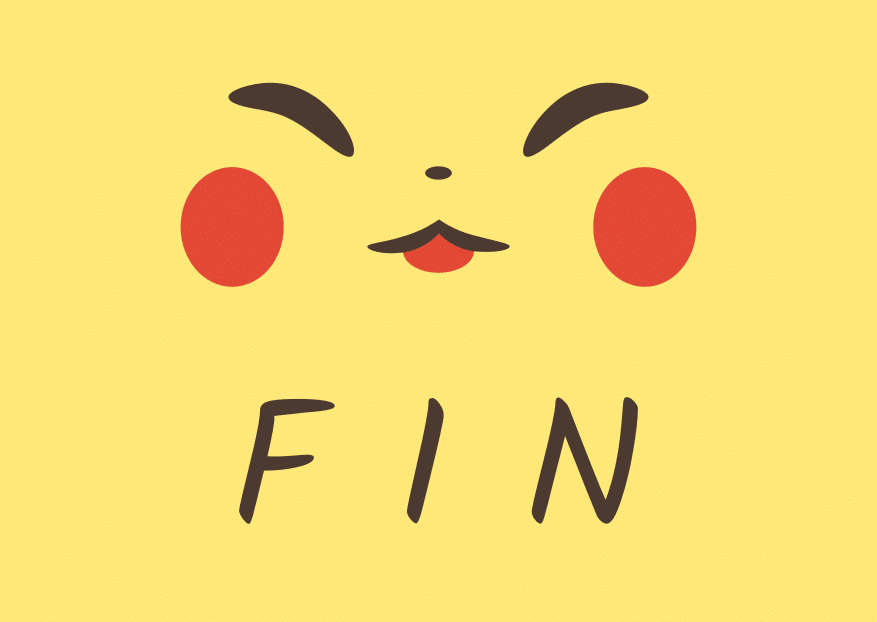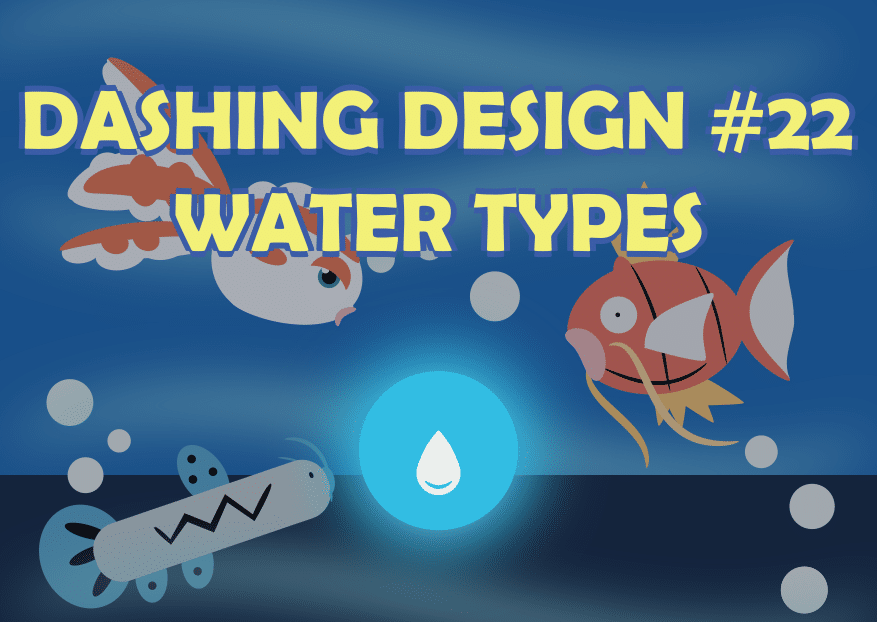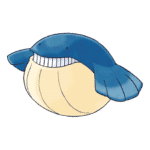Good day, Pokémon Trainers! Have you ever noticed how certain events in Pokémon GO give special attention to a single Pokémon or the community itself tends to hype a new Pokémon up? Have you ever wondered why this Pokémon specifically and what its origins are?
Well, that’s where the Dashing Design series comes in! I’ll be your guide as we take a look at the franchise history, concept, and potential design inspirations of specific Pokémon. This time, we are deep into the summer. And to help us cool off it seems Pokémon is celebrating “Water Type Month” throughout June. Pokémon GO seems to be joining in on the fun with the current loading screen, and the water and rock-type-focused Spelunker’s Cove Event. As such, I thought it would be fun to look at the design of multiple Water types. So without further ado, let’s take a look at water types!
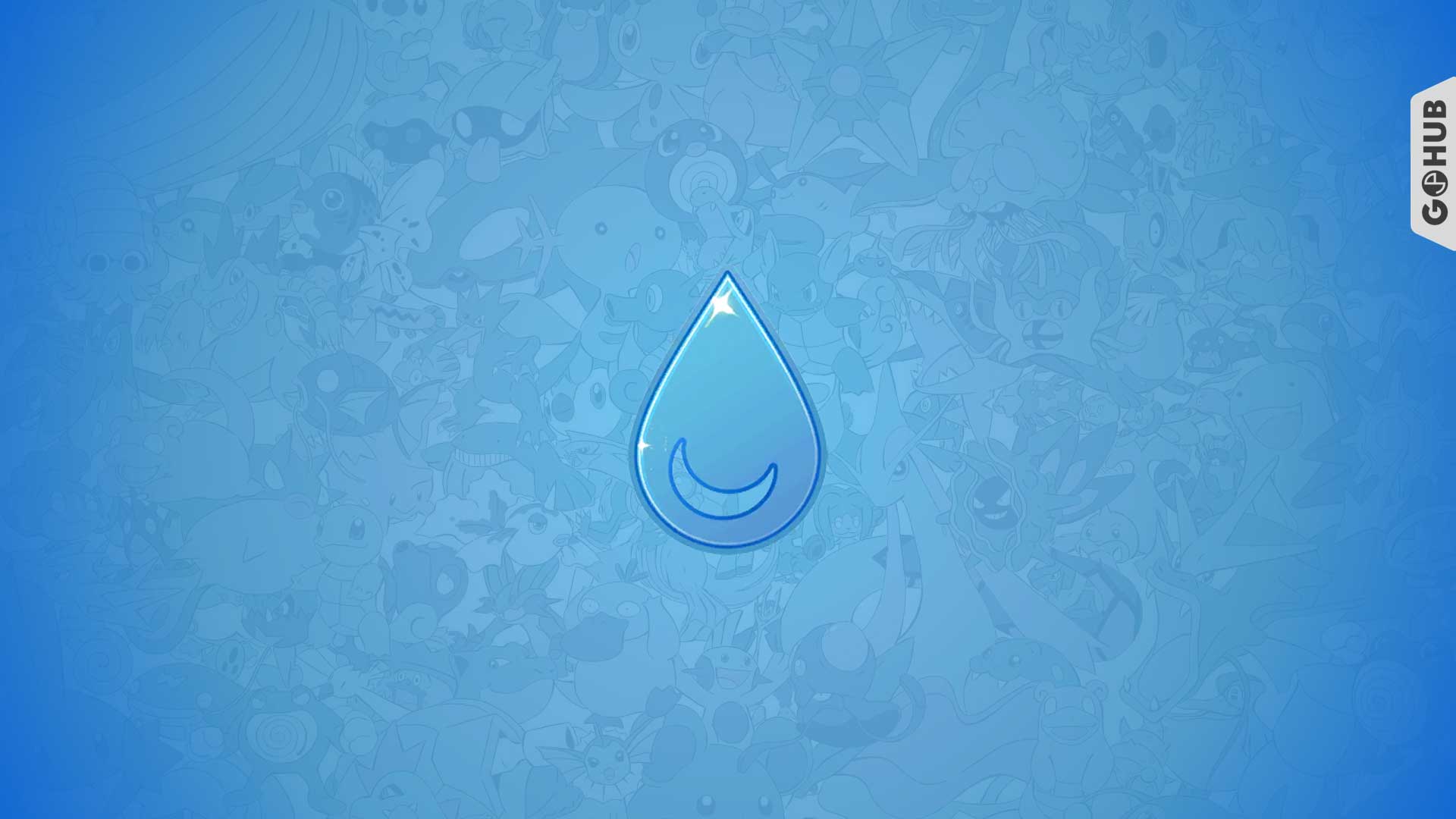
Source: GOHub Image
Water has been a type Pokémon can possess since the inception of Pokémon. This is to say, it has been a type available in the franchise since the release of Pokémon Red and Pokémon Green in Japan all the while back in 1996. Back then, and to this day, trainers playing a Pokémon game for the first time are introduced to this type very quickly. As it is one of the three types your first partner Pokémon can have!However, for the sake of this design analysis, we will be looking at Pokémon for the first three generations. These generations introduced the Kanto, Johto, and Hoenn regions for the first time in the franchise respectively.
Magikarp and Gyarados
 Magikarp
Magikarp
 Gyarados
Gyarados
Let’s start with a fan favorite. The feeble Magikarp and its evolution, the mighty Gyarados, have been popular Pokémon since the beginning of the franchise. They have also been available in mainline games of every generation so far. As such, a lot of people already know why a weak carp evolves into a powerful dragon.
But just to be on the safe page, Magikarp and Gyarados are primarily inspired by an old Chinese folk tale. The tale states that if a carp can swim up a waterfall, it can turn into a dragon. This tale has survived to the modern day in East Asia, where it is used as a phrase or an idiom. Often to mean, surpassing great hardship or insurmountable odds and achieving great success.
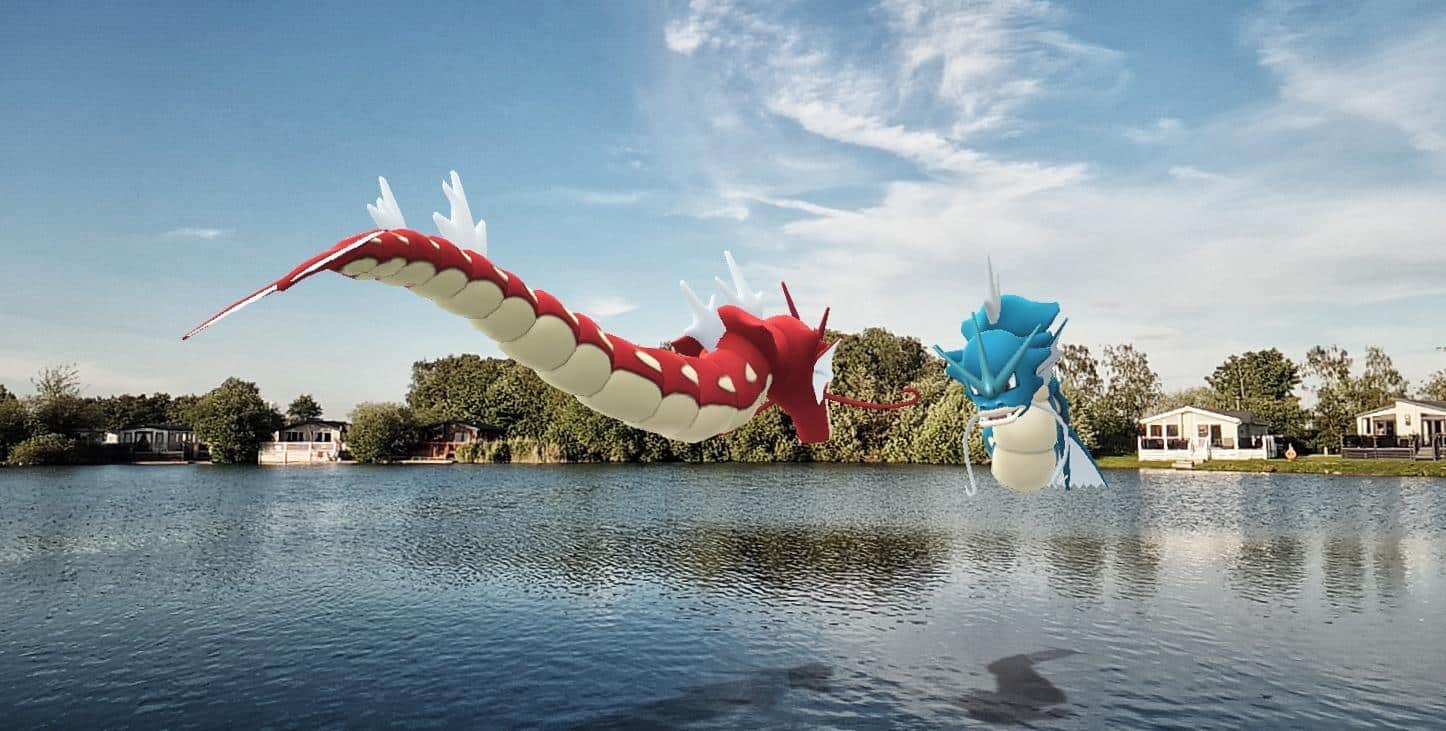
Shiny Gyarados and Gyarados Source: Uploaded by GOHub Member kittypokemonsalot
Now with the basics out of the way, there’s something else we can take a look at regarding Gyarados. Have you ever wondered why it is a Water type Pokémon, rather than something like WaterDragon? One simple answer could just be that Dragon was initially treated as a sort of, late-game final boss type. It is a type that resists every elemental type after all. The same reason could explain why Charizard didn’t get a Dragon subtype until the release of Mega Charizard X in Generation Six.
But I believe there’s a bit more to the type choice. One potential inspiration for the typing could be Koinobori, a type of decorative windsock hoisted around in Japan during Children’s Day. These almost always have carp-looking designs. Other potential inspirations that I strongly believe in, are kites. Japan is no stranger to kite festivals. Often hosting multiple throughout the year. These kites often have intricate designs. With many having carp and dragon-like designs.
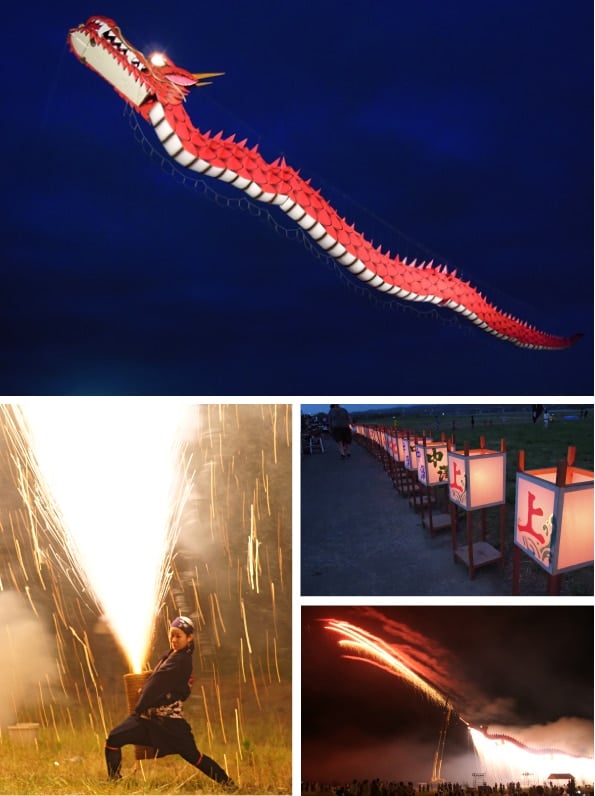 A Large Dragon Shaped Kite. Source: Fair Use Image from Travel Site
A Large Dragon Shaped Kite. Source: Fair Use Image from Travel Site
Goldeen and Seaking
 Goldeen
Goldeen
 Seaking
Seaking
We didn’t really give much of a thought to Magikarp and Gyarados’s etymology. So let’s change that with Goldeen and Seaking. Because design-wise, Goldeen and Seaking are very clearly inspired by Goldfish. But their name tickles my curiosity much more.
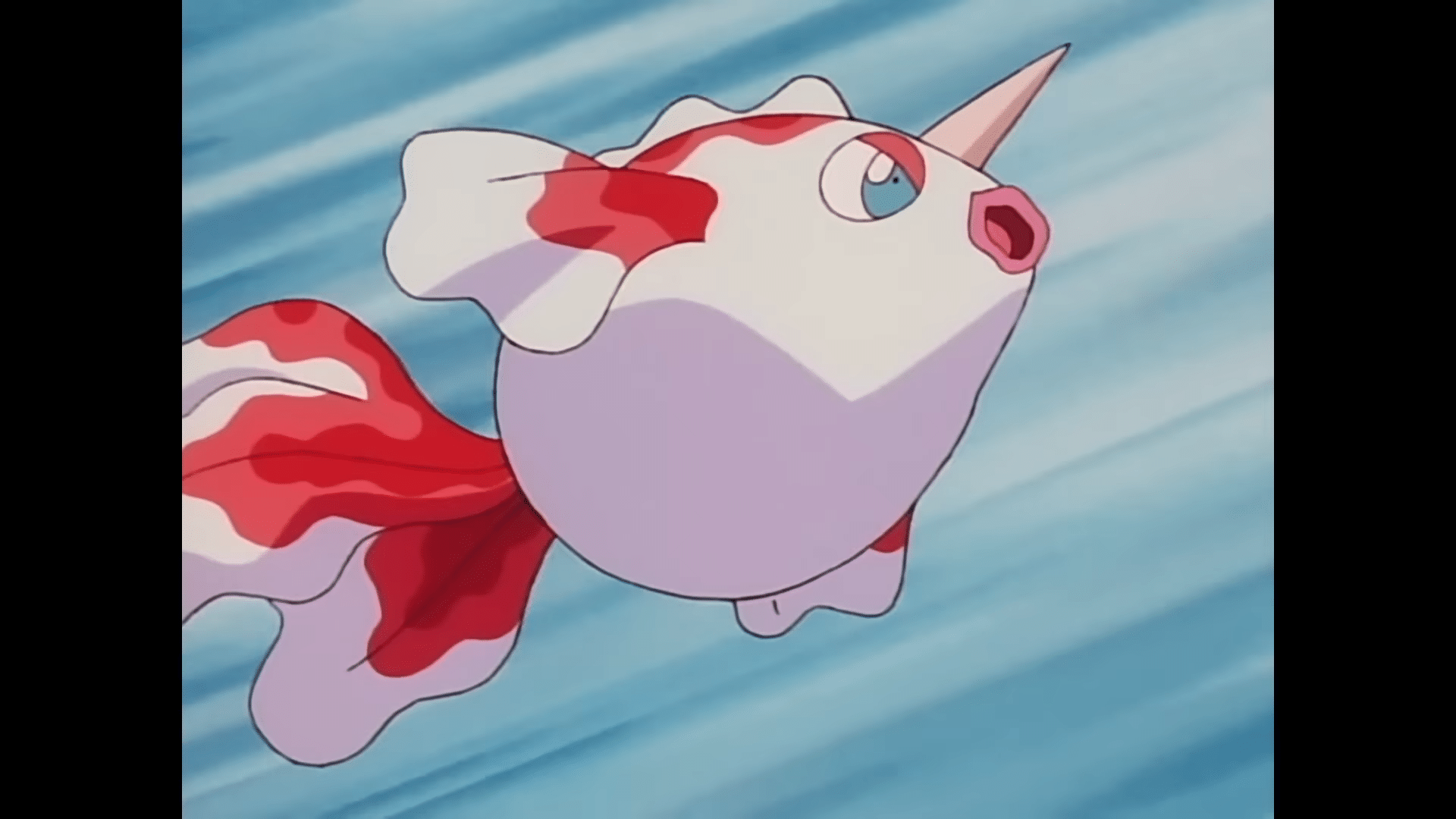
Source: Official Clip
Goldeen and Seaking seem to incorporate Queen and King in their names respectively. Which are popular titles for European monarchs. Even Seaking’s Japanese name, Azumao seems to have similar origins. It’s a combination of Azuma Nishiki (A breed of Goldfish) and ō or ou (Simple meaning would be “King”). Mao specifically could mean “Demon King”. So what’s up with that? Is there some old folk like Magikarp’s that relate Goldfish to royalty?
Well, not exactly. Though Koi fish do represent resilience, power, and occasionally wealth in Japanese culture. But Goldfish typically don’t. Instead, I believe the reason for Goldeen and Seaking’s royalty is quite simple. The Japanese name for Goldfish is “Kingyo”. The first part of which sounds very similar to the English word “King”. Keeping that in mind, Goldeen and Seaking’s horns might represent a crown or hennin.
Wailmer and Wailord
 Wailmer
Wailmer
 Wailord
Wailord
From one monarch to another. Wailmer’s name is probably a combination of “Whale” (Large aquatic mammals) or “Wail” (Wailing refers to the high-pitched sound whales make), and “Mer” (Meaning Sea in French). What isn’t present, in Wailmer’s name is its association with Beach Balls. Wailmer already has a round shape. And many of its dex entries mention how it can absorb water to become a ball to play with.
Source: Wailmer from Official Site. Beach ball photo by Rodion Kutsaiev on Unsplash
This brings us to its evolution Wailord. The lord might be literal this time around. As wailord is inspired by the Blue Whale. The largest known animal in existence. Deserving of the title of the lord of the sea!
But there’s something else interesting about Wailord. If you look at its stats, it has very high HP, but abysmal Defense and Special Defense. My theory is that much like Wailmer is partly inspired by Beach Ball, Wailord is partly inspired by Blimps. Blimps are balloon-like airships of the past. Well known for often facing accidents. So perhaps Wailord’s low defense is owing to the fact that it’s sort of a ball or balloon.
Barboach and Whiscash
 Barboach
Barboach
 Whiscash
Whiscash
Now here’s a Pokémon line I’ve really wanted to take a look at. The menace of Pokémon GO PvP itself, Whiscash. But let’s not get ahead of ourselves and look at Barboach first. Barboach’s name is a combination of “Barb” or “Barbel” (Whisker-like parts seen on certain types of fish) and “Loach” (A type of bottom-dwelling fish that often have Barbs). Pretty self-explanatory and fits the design as well.
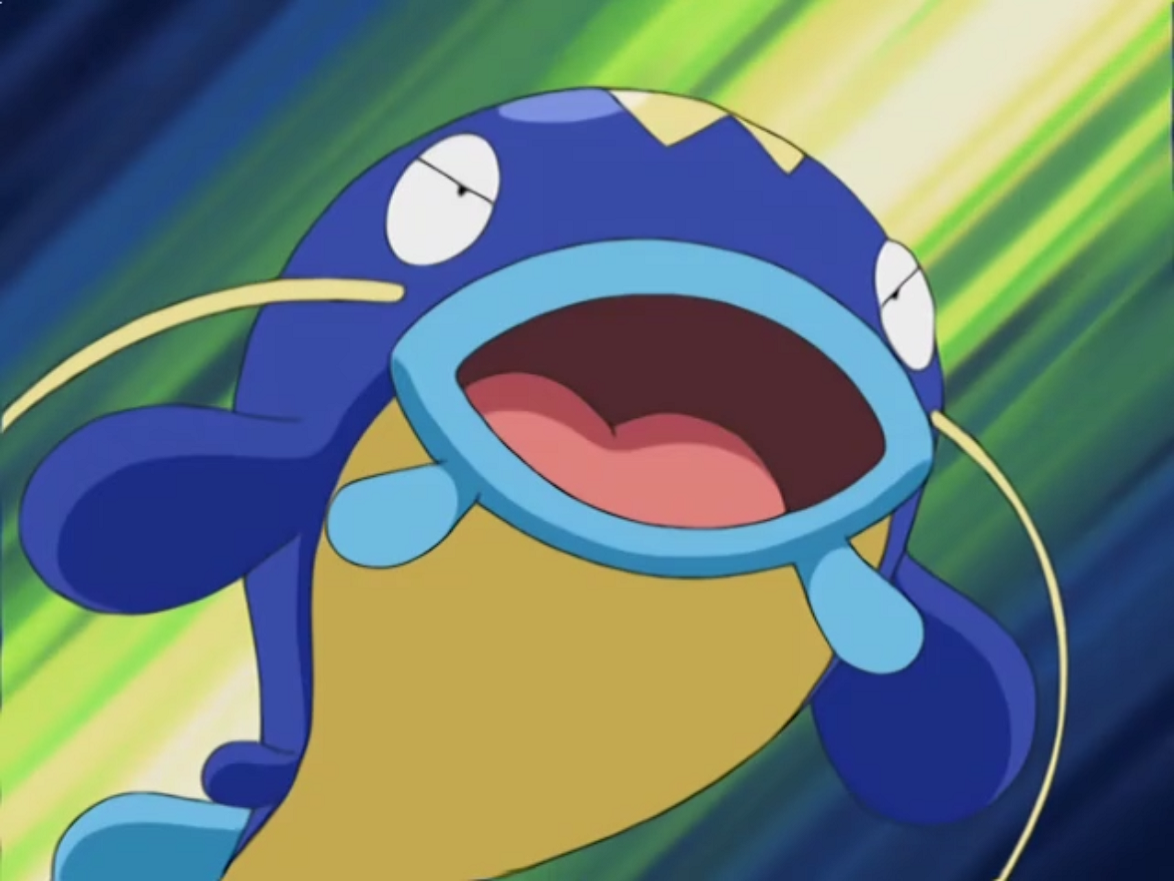
Source: Pokémon the Series: Ruby and Sapphire Ep. 75
Whiscash on the other hand is a combination of “Whiskers” (A type of hair protrusion seen on certain animals) and Cash is probably a short form of “Catfish” (A type of fish with whisker-like Barbels). So ya, Whiscash is a catfish. But it’s actually more interesting than that. While in GO we best know Whiscash for Scald. However, in the franchise overall Whiscash is meant to be popular for another move, Earthquake. Hence the Water and Ground type.
The Legend
But why though? Well, Whiscash in Japanese is called, Namazun. Which is directly taken from Namazu. Namazu is a catfish from Japanese legends that is said to cause earthquakes. This legend might have some real-life scientific backing. As catfish are often seen to perform agitative behavior before an earthquake occurs. This is why earthquakes and catfish have an association in Japan to this day. In fact, here’s a road sign that can be seen in Japan. Pretty similar to Whiscash isn’t it?
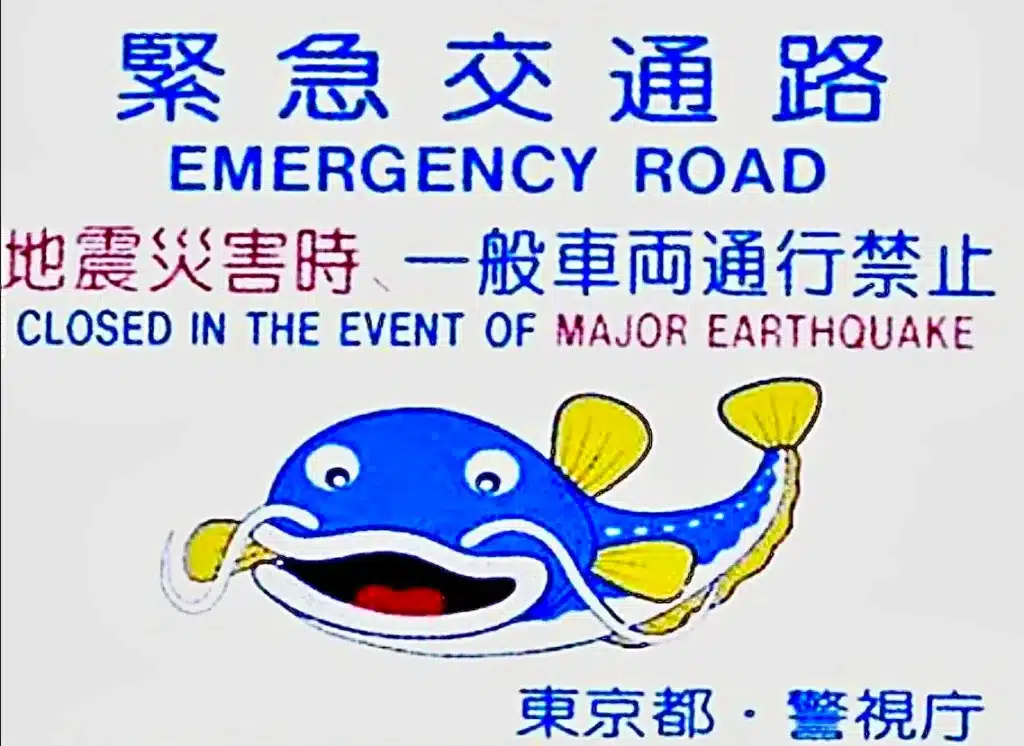
Source: Fair Use Image Collected from Blog
Other than that there’s the golden W on Whiscash’s forehead. And “Cash” in Whiscash’s name could also refer to money. While there isn’t a strong relationship between wealth and catfish. As mentioned before, Koi fish sometimes do have that association. And Koi fish also sometimes have barbs. So that could be a potential inspiration for that. There’s even a golden catfish statue in Yoshikawa City in Japan!
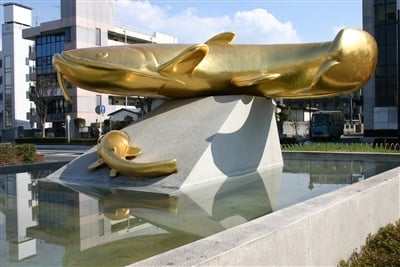
Source: Yoshikawa City Site
As to why it’s a “W” on Whiscash’s forehead. I don’t think it’s a “W” at all. I think it’s meant to look like a mustache. Whiskers do look similar to mustaches and it’s central to the Whiscash line’s identity. In fact, Barboach has mustache patterns on its sides as well.
Sharpedo
 Sharpedo
Sharpedo
Let’s end off with something brief. Sharpedo is a combination of “Shark” and “Torpedo”. Sharks are a type of large, carnivorous fish, and Torpedos are missile weapons. However, interestingly, Sharpedo’s Japanese name doesn’t seem to refer to Torpedos at all. Instead, Samehader seems to take from “Samehade”, meaning Rough Skin or Shark Skin.
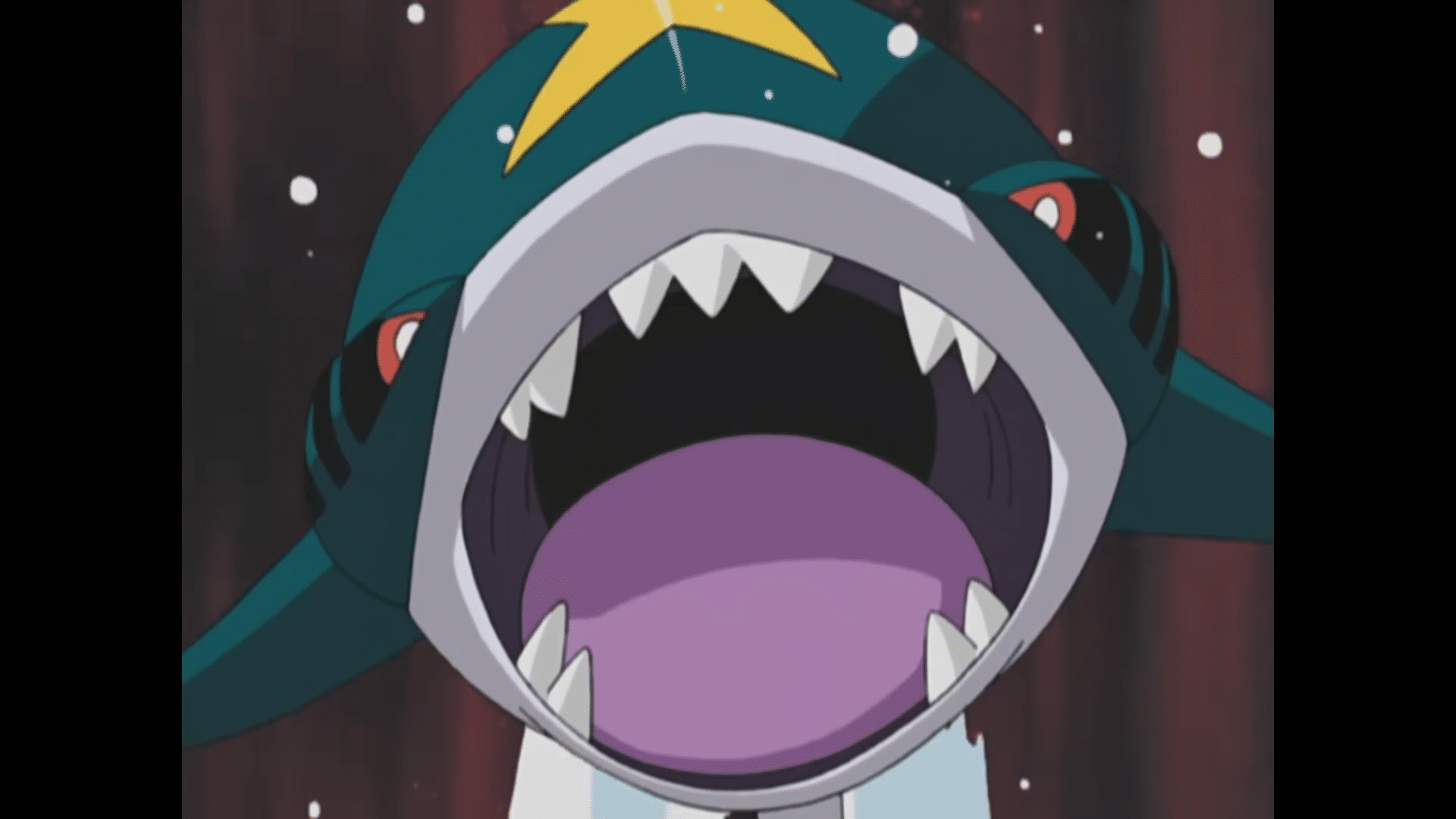 Source: Official Clip
Source: Official Clip
This might be alluding to Sharpedo’s Rough Skin ability in the mainline games. Abilities were first introduced in the 3rd Generation of Pokémon, where Sharpedo was first introduced as well. So it seems Sharpedo was originally meant to familiarize people with the idea of abilities.
And there we go! Water is the type shared by the most number of Pokémon in the entire franchise. So it stands to reason that there are a bunch of water types that may not get a full dashing design, but have a lot of interesting ideas and sources of inspiration behind them. So I’m rather glad we got the chance to take a look at some of them. And this is why, the designs of water-type Pokémon, are quite dashing!
Goodbye for now, Pokémon trainers. Priom-out!
